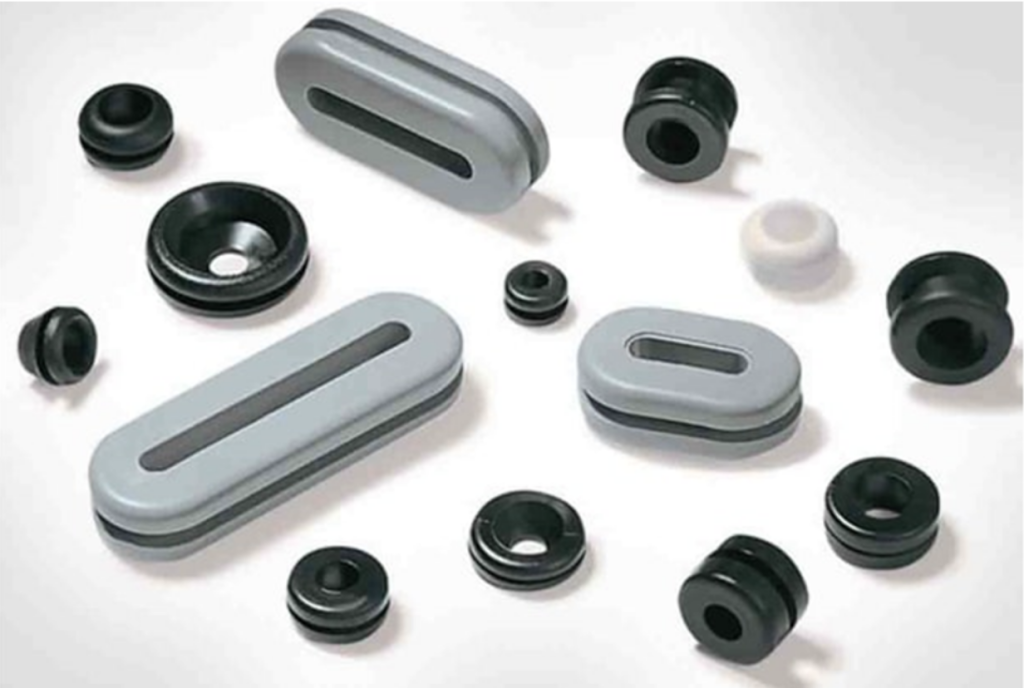Sharp edges can be dangerous in more ways than one, especially in the manufacturing and industrial setting. Keeping essential cables and wires protected is paramount and failing to do so can have far-reaching implications on the business as a whole.
That’s where rubber grommets come into play. Let’s take a closer look at these essential accessories that can make life in the industrial and manufacturing sector a lot safer and easier to manage.

What is a Rubber Grommet?
Rubber grommets, which can also go by the name grommet rubber, are attachments that are predominantly used in the manufacturing and electrical engineering industries to cover any potentially sharp edges. Those sharp edges can lead to damaged cables, wires, and pipes, causing countless complications in the process.
Grommets also provide protection against water and dust, making them equally adept in home and educational settings. They also tend to provide a much more pleasing visual aesthetic, keeping things safe and organized regardless of how many cable systems come into play. These accessories can be among the most valuable in the cable management world for reasons that you will see below.
Types of Grommet Rubber Systems
If you think that rubber grommets are all the same, think again. As it turns out, there are three different kinds to be aware of because they each serve a specific role and purpose.
Closed rubber grommets. Closed rubber grommets, also known as blind rubber grommets, these are air-tight after they have been applied. If you have holes that aren’t currently in use and want to prevent the build-up of dust and dirt, this grommet is the perfect choice to fit the need.
There is a similar variant called the semi-blind grommet. These have a central membrane that is just thin enough to be pierced by cables and wires, acting as something of a middle ground between closed and open grommets.
Open rubber grommets. The opposite of the open rubber variation, these closed grommets are very basic. That said, they do a great job of protecting pipes and cables as they pass through metal plating with holes in them.
Rubber blanking plugs. These are generally used for sealing holes, meant to not only hold up against but control pressure that comes from both above and below. For high-pressure tubing and devices, this is the proper type of grommet to use.
Rubber blanking plugs have a small hole where the wire can be inserted, holding steadily. You might also hear this type of grommet called a diaphragm grommet.
The Uses of Rubber Grommets
Getting to know rubber grommets further, there is a litany of uses for them. In addition to the electrical engineering and industrial sectors, there are plenty of other applications for rubber grommets.
First, it can help cover up sharp edges on metal plates that have holes in them. The grommet protects the cables from chafing damage and potential cuts, which ultimately prolongs their useful life. Think of electrical backboxes and you will find a great place to install rubber grommets. The wiring exit and entry points are often protected by grommets.
You will find rubber grommets in any place where strain and gripping stress can damage wiring. For the back of laptop and PC ports, you are going to find rubber grommets that protect the cables from stress damage. Any potential damage could ultimately disrupt the ability of the device from fully functioning. One of the other common places you will find rubber grommets is in the automotive industry. They help to reduce engine vibration that can lead to the chafing and wearing of wires and electrical components.

